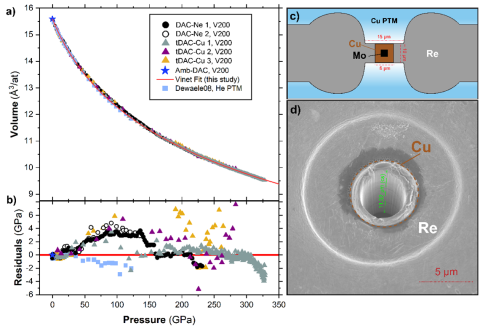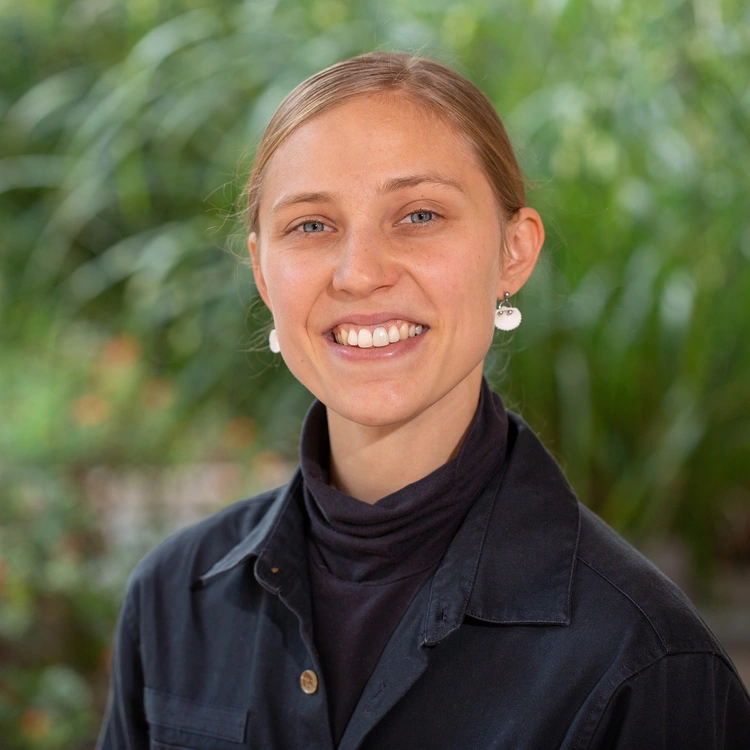Improving equations of state calibrations in the toroidal DAC—The case study of molybdenum

The toroidal diamond-anvil cell (tDAC) can routinely achieve pressures under static compression above 300 GPa, but accurate equations of state (EoS) measurements of materials to these conditions remains limited. To obtain high-quality EoS data, samples must be compressed in a soft pressure-transmitting medium (PTM) to provide a nearly isotropic compression environment, but the small tDAC sample chamber (~4 – 6 µm diameter) presents a great challenge for embedding micron-sized samples in a soft PTM. In a paper recently published in the Journal of Applied Physics as an Editor’s Pick, an international team of scientists from Lawrence Livermore National Laboratory (LLNL), the High Pressure Collaborative Access Team (HPCAT) at the Advanced Photon Source, and the Extreme Conditions Beamline (ECB) at the Deutsches Elektronen-Synchrotron have developed a new tDAC sample configuration that dramatically improves the quality of EoS measurements to multi-megabar conditions.
The scientists measured the EoS of Mo by intricately preparing a sample package of Mo fully surrounded by copper, a softer metal with a low yield strength, in the < 10 µm-scale sample chamber of the tDAC. These experiments reached 340 GPa and the measured diffraction of Mo in the Cu PTM resulted in Mo volumes within 1% of previous ideal Mo compression studies that extended to less than half the pressure reached in this study. The team also measured Mo in Ne to 230 GPa, more than 100 GPa higher pressures than previous measurements of Mo in a noble gas medium, and found good agreement with the Mo tDAC results. The team then calculated elastic stiffness and compliance constants of Cu and Mo to confirm that Cu withstands little uniaxial stress compared to Mo under nonhydrostatic compression to > 300 GPa. These results reveal that this toroidal sample package design achieved a nearly ideal compression environment to these ultra-high pressures. While the scientists tested this methodology on Mo with a Cu PTM, other soft metal PTMs could be tested and this sample configuration can be broadly applied for characterizing materials pertinent to condensed-matter physics, chemistry, and planetary science.
This work was performed under the auspices of the U.S. Department of Energy by Lawrence Livermore National Laboratory under Contract DE-AC52-07NA27344.
Zurkowski, C.C., Lim, R.E., Pardo, O.S., O’Bannon, E.F., Glazyrin, K., Söderlind, P. and Jenei, Z., 2024. Improving equations of state calibrations in the toroidal DAC—The case study of molybdenum. Journal of Applied Physics, 136 (7). https://doi.org/10.1063/5.0223794
Photo: Claire Zurkowksi, LLNL (lead author)
